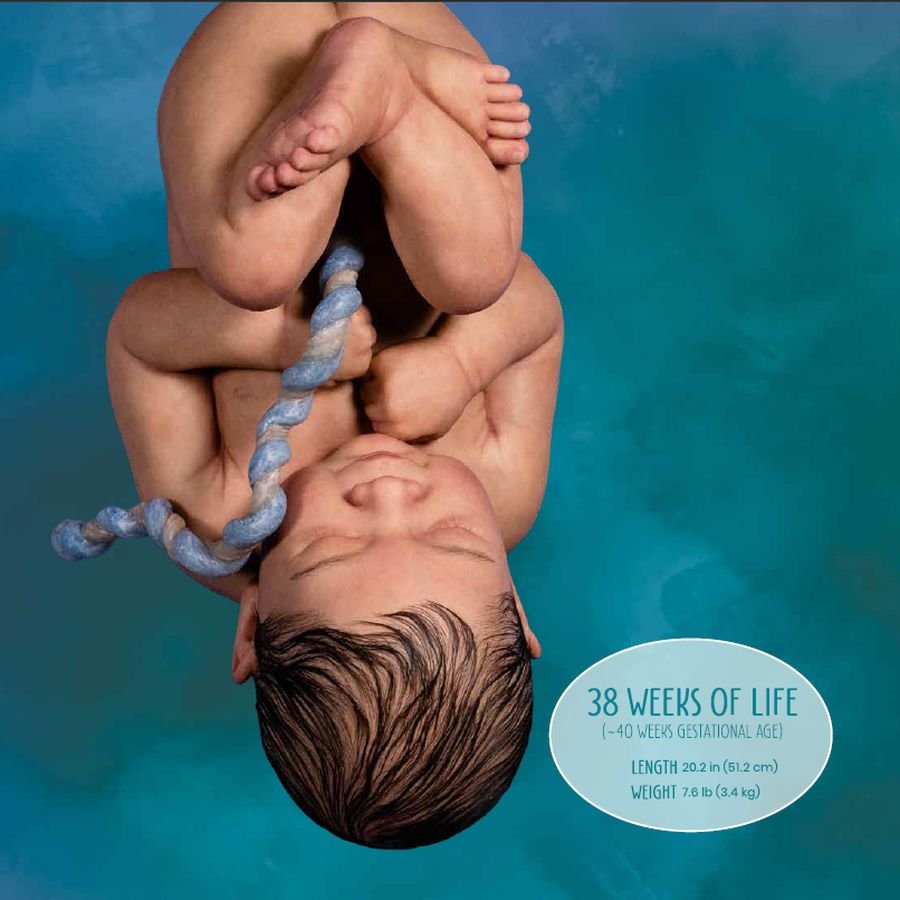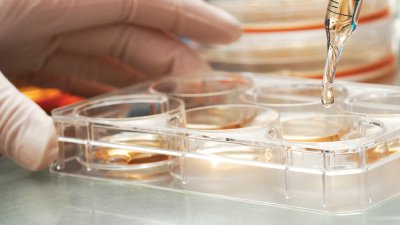
Birth: Week 38 in the Life of an Unborn Baby
A baby is usually born during gestational weeks 38–40 amid many complex and miraculous developmental changes to the baby . . . and the mother.
Resources to Help You Share the Sanctity-of-Life Message
- Share your story, read inspiring testimonies, get answers, and get help.
- Get a life-affirming VBS for your church and neighborhood.
- Have an eye-catching, “3D” lenticular version of the powerful Fearfully and Wonderfully Made exhibit for your coffee table or church.
- Find out about the Fearfully and Wonderfully Made exhibit at the Creation Museum.
We give thanks to You, O God, we give thanks!
For Your wondrous works declare that Your name is near. (Psalm 75:1)
God’s wondrous works are certainly declared in the last weeks of pregnancy! After 38 weeks of life, the baby is full term. An obstetrician would call this 40 weeks gestational age. Though some women go a little longer, this is considered the final week for pregnancy. The weeks before, both the baby’s and the mother’s body prepare for the birthing process. These changes are so intertwined that it would be impossible for them to be random developments of an evolutionary process! Instead, pregnancy during the last few weeks is strong evidence of a wise Creator.
Birth Preparations
During gestational weeks 38 to 40, the mother’s three joints in her pelvis loosen, causing expansion so that the baby can more easily pass through during birth.1 As her hormonal levels change, the mother’s cervix softens and starts to dilate in preparation for the baby’s birth. The walls of the uterus are also affected by hormonal changes. Some women have Braxton Hicks contractions, which are also known as “false labor,” though others have them even earlier.

Model from the Creation Museum’s Fearfully and Wonderfully Made exhibit and book.
The baby is also growing and changing in preparation for birth. Babies gain weight quickly during this stage, putting on an average of four ounces each day!
The baby is also growing and changing in preparation for birth. Babies gain weight quickly during this stage, putting on an average of four ounces each day! The average baby during these weeks will weigh between six to eight pounds and is around 18 to 22 inches long.2 As the mother’s pelvis loosens, the baby usually “drops” and is positioned head-down, putting extra pressure on the mother’s softening cervix. The cervix will expand to 10 cm when the mother is in labor and ready to deliver the baby.
During pregnancy, the placenta, with help from the mother’s body, functions as the baby’s lungs, kidneys, digestive system, liver, and immune system, giving the baby time to grow and develop.3 The placenta is a very complex organ, not allowing the mother’s blood and the baby’s blood to mix. Yet nutrients are passed from mother to baby, and waste products are passed from baby to mother. The placenta does all this and protects the baby from attack by the mother’s immune system too. The mother’s blood flows through the placenta at a rate of one pint per minute!4
After Birth
After the baby has been born, the placenta is no longer needed. What follows next is truly amazing!
When the uterus contracts to expel the placenta after the birth of the baby, some of the endometrial surface is torn off with it. This results in severing about 20 large uterine arteries which, if unchecked, would involve the loss of blood at a rate of about one pint per minute. Since fewer than five quarts (4 liters) of blood are in the adult female body, all the blood would be lost in less than 10 minutes.5
How does a mother survive this? God designed the severed uterine arteries with a “precisely placed muscular sphincter that acts like a purse string, or a surgeon’s hemostat, to immediately close off the loss of blood.”6 During childbirth, the mother loses an average of only one pint of blood!
After being born, the baby’s body goes through some significant changes to survive without help from the placenta. While still in the womb, blood flowed through the baby’s heart and body, bypassing the lungs. However, after the baby is born, the bypass between the heart’s right and left atria closes, allowing blood to travel to the lungs.7 The baby’s blood and lymph systems remove fluid from the lungs, replacing it with oxygen, and Baby takes his or her first breath!8
These complex and miraculous developmental changes to mother and baby towards the end of pregnancy could not possibly come about by evolution and millions of years.
These complex and miraculous developmental changes to mother and baby towards the end of pregnancy could not possibly come about by evolution and millions of years. How would a mother and baby survive any half-steps? These intricate systems are surely evidence of a wise Creator! Even in our sin-cursed world, where things do not go as hoped and planned during pregnancy, death and suffering can also remind us of God’s wondrous works. How is this possible?
After Loss
While I’ve experienced the joy of giving birth, I’ve also had three miscarriages over the course of several years. It was very hard for me to understand how I could still see God’s wondrous works in death, pain, and loss, even amid the children I was able to give birth to. This was also true as I had anemia after my youngest daughter was born. How can God be good when bad things happen? But the Bible is full of God’s promises. I was reminded by 2 Corinthians 5:7 to “walk by faith and not by sight.” Romans 8:28 gave me encouragement that “all things work together for good to those who love God.” This is true whether or not I understand.
Do you love God? Do you have a relationship with him that gives you the assurance that everything will work together for good in your life, even when you don’t understand how that could possibly happen? Just as the physical birthing process brings forth life, the spiritual birthing process does too! In John 3:3, Jesus told Nicodemus the Pharisee that “unless one is born again, he cannot see the kingdom of God.” Nicodemus was apparently completely confused by spiritual birth and how this could fix his separation from God.
Nicodemus said to him, “How can a man be born when he is old? Can he enter a second time into his mother’s womb and be born?” (John 3:4)
Jesus answered by explaining “that which is born of the flesh is flesh, and that which is born of the Spirit is spirit.” He went on in this chapter to explain that the cure for sin and death is spiritual birth.
For God so loved the world that he gave his only begotten Son, that whoever believes in him should not perish but have everlasting life. (John 3:16)
Reminders
Death and suffering are constant reminders that our world is broken because of sin. Yet Jesus has provided healing from the curse of sin through his offer of spiritual birth! This certainly proclaims his wondrous works!
As we remember the intricate development of both baby and mother during weeks 38 to 40 of pregnancy in preparation for physical birth, don’t forget to think about spiritual birth too! And always remember that “God’s wondrous works declare that his name is near” in the world around us!
Footnotes
- Fearfully and Wonderfully Made Book (Hebron, KY: Answers in Genesis, 2021), 51.
- “Fetal Development Wall Chart,” Answers 2, no. 1 (January 2007); and Fearfully and Wonderfully Made Book, 54.
- David Menton, “The Placenta,” Answers 2, no. 1 (January 2007): 70–73, https://answersingenesis.org/human-body/the-placenta/.
- Ibid.
- Ibid.
- Ibid.
- Fearfully and Wonderfully Made Book, 55.
- Ibid.
Recommended Resources

Answers in Genesis is an apologetics ministry, dedicated to helping Christians defend their faith and proclaim the good news of Jesus Christ.
- Customer Service 800.778.3390
- © 2024 Answers in Genesis





